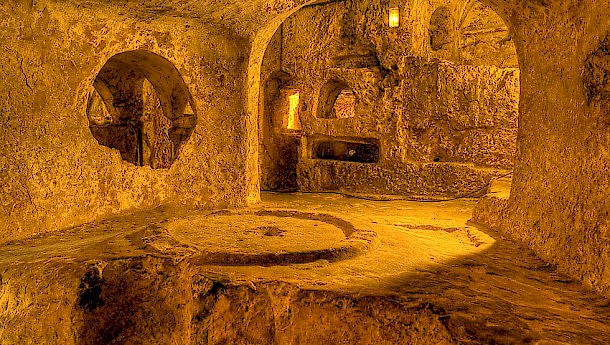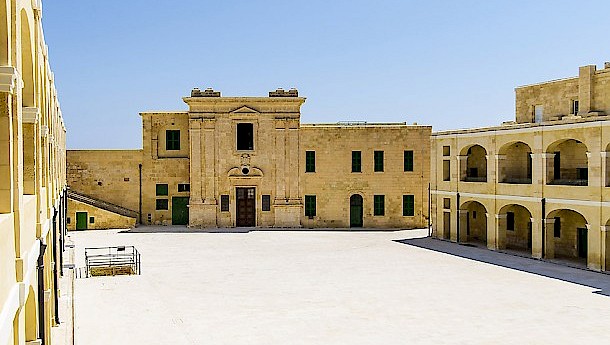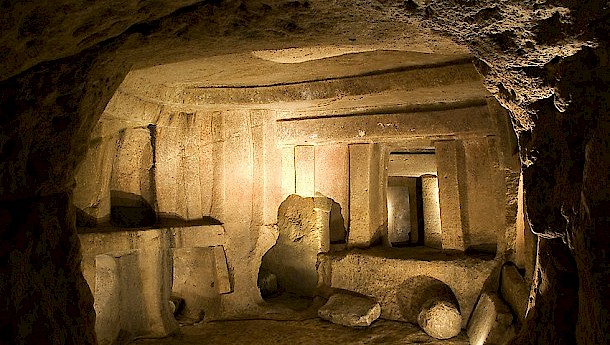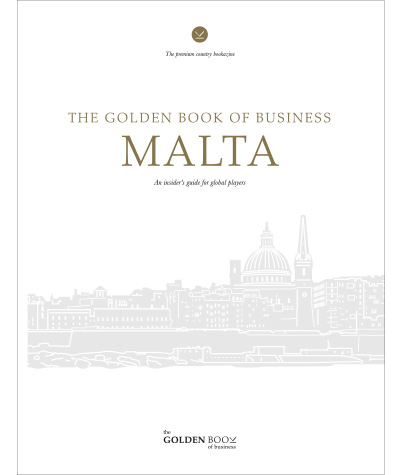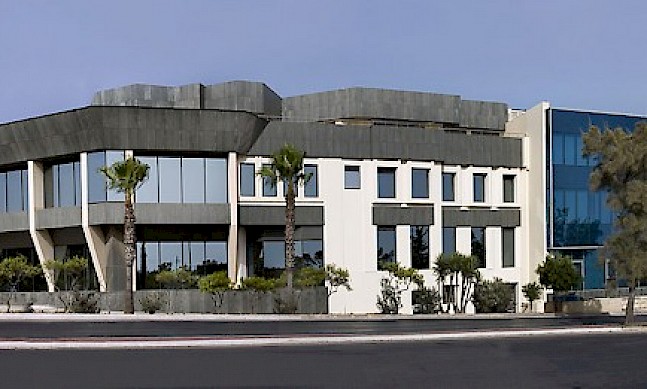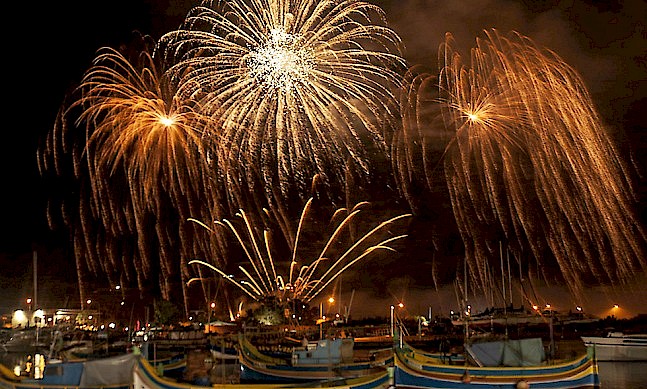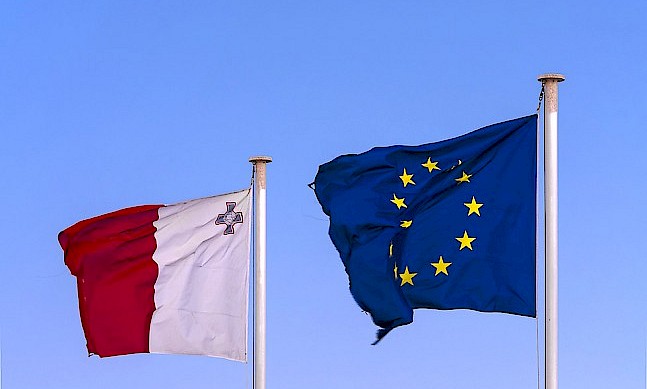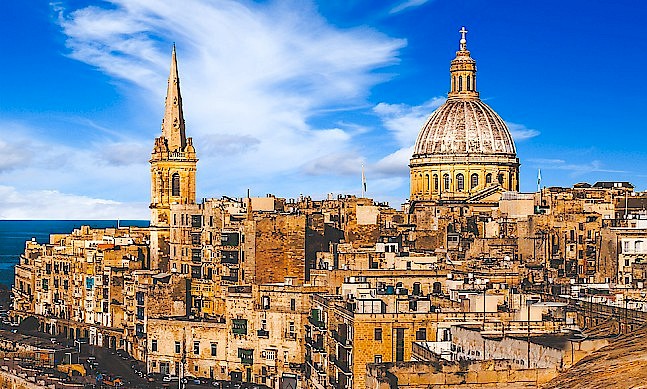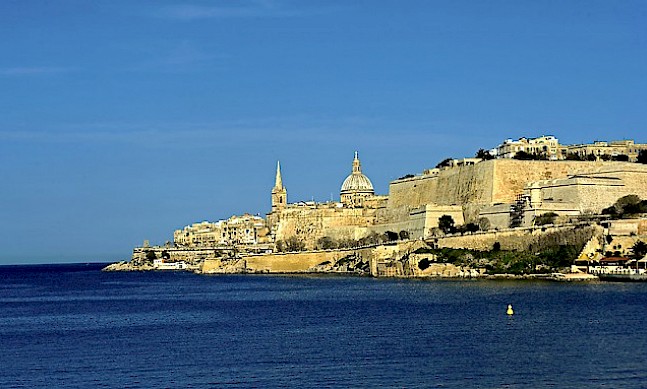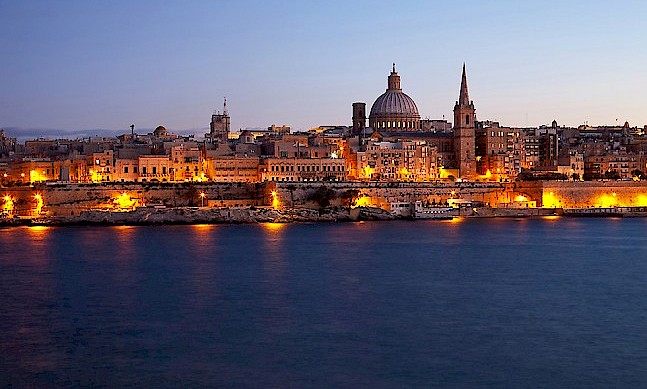An underground oracle chamber that magnifies a male human voice 100 times, the world’s oldest archaeological evidence of Christianity, dining tables and benches carved from rock amid a vast collection of catacombs… Malta has a redoubtable heritage stretching back 7,000 years, much of it replete with history and mystery. Heritage Malta is the government agency charged with conservation, restoration and sharing this untold wealth with the world. Until recently, the riches required to maintain such treasures were scarce on the ground. Now, with funding help from Europe, a series of projects are bringing them alive and accessible. Kenneth Gambin, CEO of Heritage Malta heads a workforce of 300 looking after 40 sites. Completion of works on two forts in 2015 has created another 50 jobs.
St Paul’s Catacombs
Dining with the dead
Third century AD catacombs, with space for 1,000 bodies, are the earliest archaeological evidence of Christianity in Malta. The site was opened in October 2015 after a €3 million restoration co-financed by the European Regional Development Fund. Romans ate off circular tables carved from the rock to commemorate the dead.
Fort St Elmo
Home to the George Cross
Built in 1533, Fort St Elmo withstood massive bombardment from Turkish cannon during the Ottoman siege of 1565. The initial garrison was around 100 knights and 700 soldiers, including around 400 Italian troops. The fort withstood the siege for 29 days. All the knights were killed, and only nine Maltese defenders survived by swimming across to Fort St Angelo.
Fort St Elmo was inaugurated in May 2015 as a cultural attraction hosting the National War Museum, which houses the George Cross awarded to Malta by King George VI in April 1942. A €15 million restoration project was co-financed by the European Regional Development Fund.
Tarxien Temples
Animal sacrifice
A €2.5 million protective shelter over the prehistoric remains of Tarxien Temples is co-financed by the European Regional Development Fund. They will reopen in December 2015. The temples were used, inter alia,
for animal sacrifice.
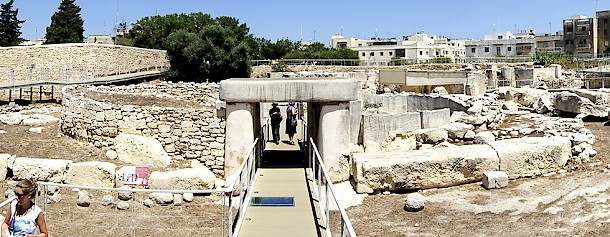 Tourists visit the temples
Tourists visit the temples
Fort St Angelo
Swimming pool out
Fort St Angelo is being rehabilitated through a €14 million project co-financed by the European Regional Development Fund. Reopened in October 2015, the fort’s role throughout history, particularly the 1565 Ottoman siege, imbues it with great emotional significance for the Maltese people. All the additions made after 1979, including a swimming pool, have been removed to give the fort the same look it had when last used for a military purpose.
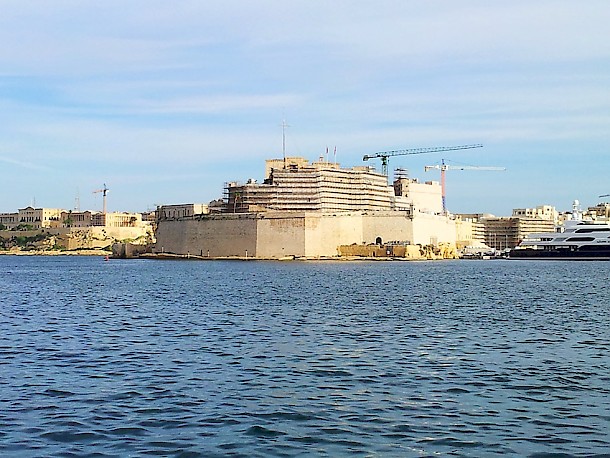 Fort St Angelo viewed from the harbour
Fort St Angelo viewed from the harbour
Hal Saflieni Hypogeum
Attuned to the male voice
The Hal Saflieni Hypogeum, possibly the world’s oldest prehistoric underground temple, received around €1 million co-financed by the Norway Grants to refurbish its environmental control system. It will be re-opened in mid-2016. The purpose of the 5,000-year-old structure, home to elongated skulls and (probably apocryphal) accounts of paranormal activity, is shrouded in mystery. It was most likely a sanctuary, perhaps for an oracle. Sound made in the ‘oracle chamber’, carved out of solid limestone, “is magnified a hundredfold and audible throughout the entire structure,” according to a book on the temple. Another study of the acoustic properties found that a male human voice singing ‘ooh’ at 114 Hz can stimulate its resonance, a feat emulated by a shamanic natural skin hoop drum.


